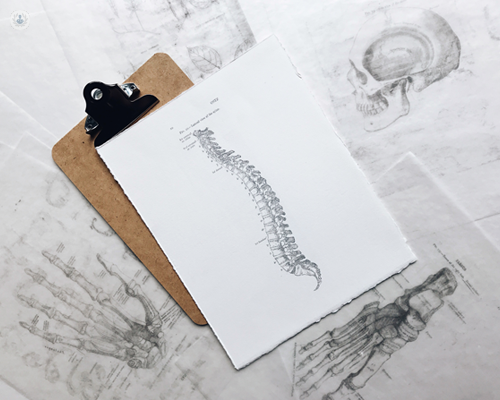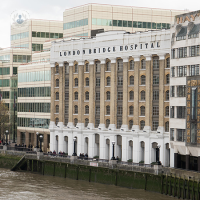Spinal endoscopy
Mr Kevin Sean O´Neill - Neurosurgery
Created on: 11-13-2012
Updated on: 01-08-2024
Edited by: Karolyn Judge
What's a spinal endoscopy?
A spinal endoscopy is a treatment which is classified as a minimally invasive surgery. It allows surgeons to operate on:
- herniated discs,
- spinal stenosis, and;
- other spinal conditions.
A thin tube with a camera on the end is inserted so that the procedure can be done with minimal incisions. Thanks to the high resolution images the surgeons see during the procedure, they are able to get a detailed picture of the area and perform meticulous procedures with a high degree of accuracy.

Why is spinal endoscopy required?
Surgery is normally carried out on patients who have a slipped disc or lumbar canal stenosis. It is normally performed on patients where other treatments have not been effective.
What does spinal endoscopy involve?
The surgery involves introducing a small endoscope through the coccyx, which enables the inner spinal canal to be seen. A light is then shined upon it in order to show high resolution images of the damaged spinal areas.
Main aim of spinal endoscopy
The main aim of the operation is to remove part of the scarred tissue from the trapped nerves. Due to the way this procedure is done, medication to numb the area can be administered directly and reach the affected areas faster.

What's involved in post-operative care after a spinal endoscopy?
Recovery time is quicker than with traditional types of surgery. The patient can largely follow their normal routine upon leaving the hospital, but will have to come back two weeks later to remove any stitches or staples left after the incision.
There are some things that may cause some discomfort so patients are recommended to avoid rigorous exercise, especially contact sports. After a month or month and a half the patient will be able to fully get back to their daily routine, including any sports they enjoy.
Are there alternative treatments to spinal endoscopy?
A spinal endoscopy is one of the most advanced types of surgery at the moment. An alternative option to this treatment is open spine surgery. The advantages of spinal endoscopy compared to open spine surgery include that the risk of injury is lower as the incision precision is greater. Bleeding and muscle injury is also lessened as recovery is much quicker.





